Iyad Batal
Multi-Interest-Aware User Modeling for Large-Scale Sequential Recommendations
Mar 04, 2021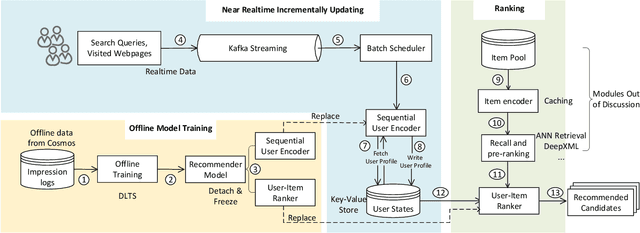

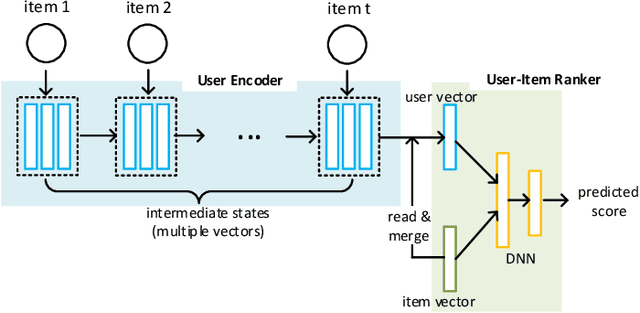
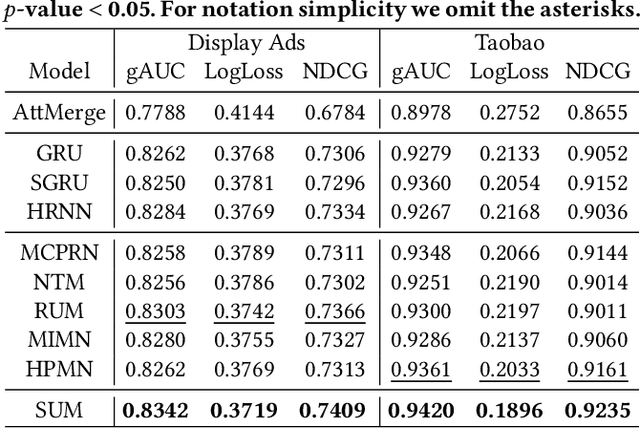
Abstract:Precise user modeling is critical for online personalized recommendation services. Generally, users' interests are diverse and are not limited to a single aspect, which is particularly evident when their behaviors are observed for a longer time. For example, a user may demonstrate interests in cats/dogs, dancing and food \& delights when browsing short videos on Tik Tok; the same user may show interests in real estate and women's wear in her web browsing behaviors. Traditional models tend to encode a user's behaviors into a single embedding vector, which do not have enough capacity to effectively capture her diverse interests. This paper proposes a Sequential User Matrix (SUM) to accurately and efficiently capture users' diverse interests. SUM models user behavior with a multi-channel network, with each channel representing a different aspect of the user's interests. User states in different channels are updated by an \emph{erase-and-add} paradigm with interest- and instance-level attention. We further propose a local proximity debuff component and a highway connection component to make the model more robust and accurate. SUM can be maintained and updated incrementally, making it feasible to be deployed for large-scale online serving. We conduct extensive experiments on two datasets. Results demonstrate that SUM consistently outperforms state-of-the-art baselines.
Multi-Channel Sequential Behavior Networks for User Modeling in Online Advertising
Dec 27, 2020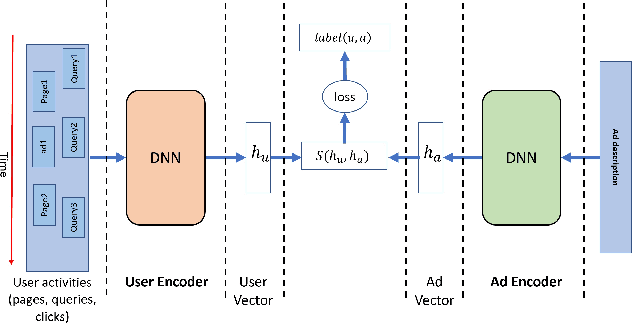

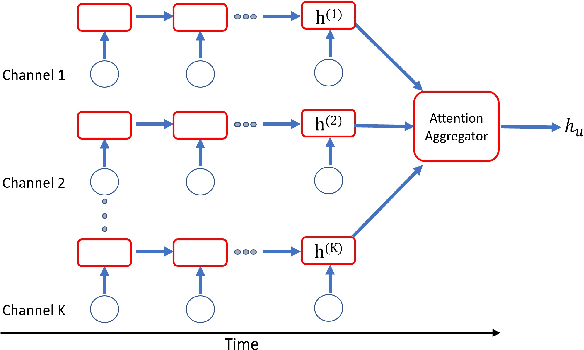

Abstract:Multiple content providers rely on native advertisement for revenue by placing ads within the organic content of their pages. We refer to this setting as ``queryless'' to differentiate from search advertisement where a user submits a search query and gets back related ads. Understanding user intent is critical because relevant ads improve user experience and increase the likelihood of delivering clicks that have value to our advertisers. This paper presents Multi-Channel Sequential Behavior Network (MC-SBN), a deep learning approach for embedding users and ads in a semantic space in which relevance can be evaluated. Our proposed user encoder architecture summarizes user activities from multiple input channels--such as previous search queries, visited pages, or clicked ads--into a user vector. It uses multiple RNNs to encode sequences of event sessions from the different channels and then applies an attention mechanism to create the user representation. A key property of our approach is that user vectors can be maintained and updated incrementally, which makes it feasible to be deployed for large-scale serving. We conduct extensive experiments on real-world datasets. The results demonstrate that MC-SBN can improve the ranking of relevant ads and boost the performance of both click prediction and conversion prediction in the queryless native advertising setting.
A Mixtures-of-Experts Framework for Multi-Label Classification
Sep 16, 2014



Abstract:We develop a novel probabilistic approach for multi-label classification that is based on the mixtures-of-experts architecture combined with recently introduced conditional tree-structured Bayesian networks. Our approach captures different input-output relations from multi-label data using the efficient tree-structured classifiers, while the mixtures-of-experts architecture aims to compensate for the tree-structured restrictions and build a more accurate model. We develop and present algorithms for learning the model from data and for performing multi-label predictions on future data instances. Experiments on multiple benchmark datasets demonstrate that our approach achieves highly competitive results and outperforms the existing state-of-the-art multi-label classification methods.
 Add to Chrome
Add to Chrome Add to Firefox
Add to Firefox Add to Edge
Add to Edge